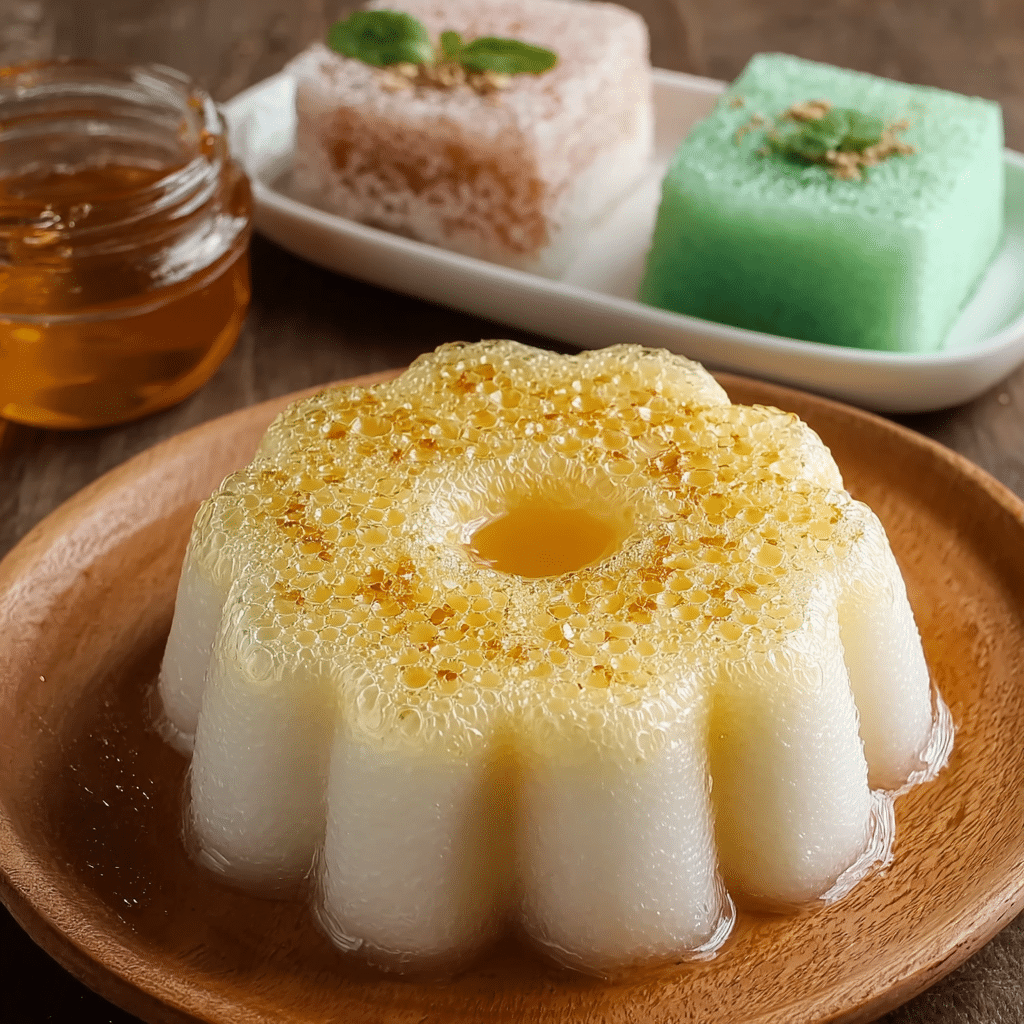Steamed Vietnamese Honeycomb Cake, also known as Bánh Bò Nướng, is a visually captivating dessert with a chewy texture and vibrant green hue. This traditional Vietnamese treat is flavored with coconut milk and pandan extract, giving it a delicate fragrance and taste that’s both nostalgic and exotic. The most striking feature of the cake is its interior – a light and airy network of tiny holes resembling a honeycomb – made possible by yeast and steam.
Perfectly sweetened and entirely gluten-free, this cake is a popular choice for tea time, family gatherings, and special occasions in Vietnamese culture. It’s enjoyed both for its subtle, creamy flavor and its satisfyingly bouncy texture. While it may look intricate, the recipe is surprisingly approachable and deeply rewarding to make. Slice into it to admire its vibrant color and unique pattern, and serve it with a cup of jasmine tea for a delightful pairing.
Full Recipe
Ingredients:
-
1 cup tapioca starch
-
1/4 cup rice flour
-
1 cup coconut milk
-
1/2 cup granulated sugar
-
1/2 tsp baking powder (aluminum-free)
-
1 tsp active dry yeast
-
2 tbsp warm water
-
1/4 tsp salt
-
1/2 tsp pandan extract
-
Oil or butter (for greasing the pan)
Directions:
-
In a small bowl, mix yeast with warm water and a pinch of sugar. Let it sit until frothy (about 10 minutes).
-
In a separate bowl, combine tapioca starch, rice flour, and salt.
-
In a saucepan over low heat, warm the coconut milk and sugar until just dissolved (do not boil). Allow to cool.
-
Mix the yeast mixture, pandan extract, and coconut milk mixture into the flour blend. Stir well until smooth and fully incorporated.
-
Cover the batter with a clean towel and let it rest in a warm area for 1-2 hours, or until bubbles form and the batter rises slightly.
-
Prepare a steamer with enough water and heat it to a gentle boil.
-
Grease a round or square cake pan generously.
-
Pour the batter into the pan and steam over medium heat for 25–30 minutes or until a toothpick inserted into the center comes out clean.
-
Allow the cake to cool completely before slicing to reveal the honeycomb texture.
Prep Time: 15 minutes | Cooking Time: 30 minutes | Total Time: 45 minutes
Kcal: 220 kcal | Servings: 6 servings






